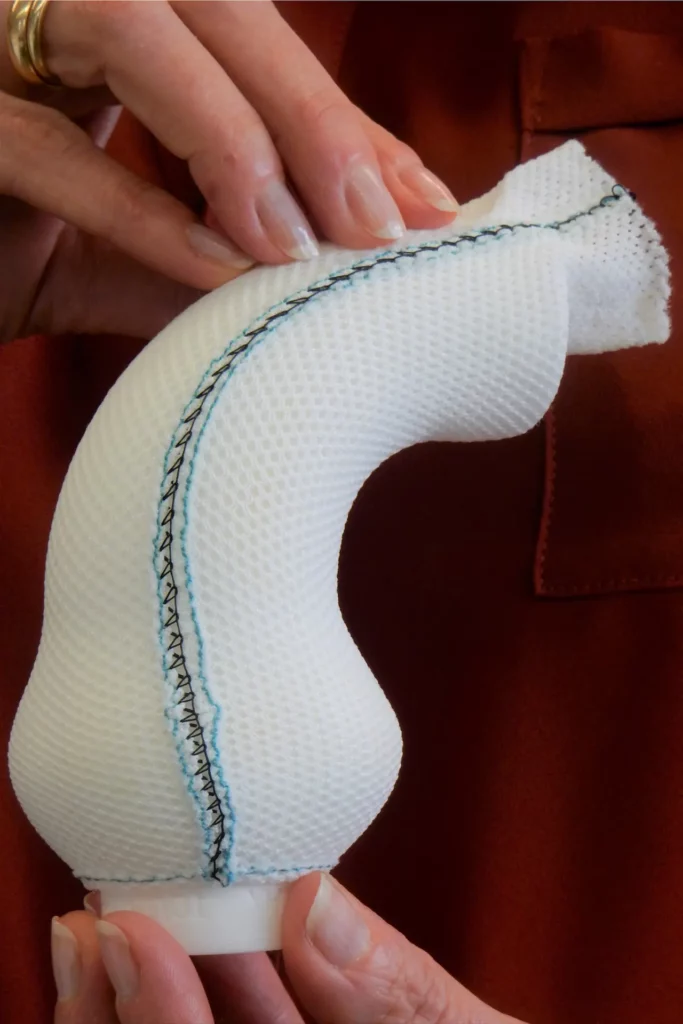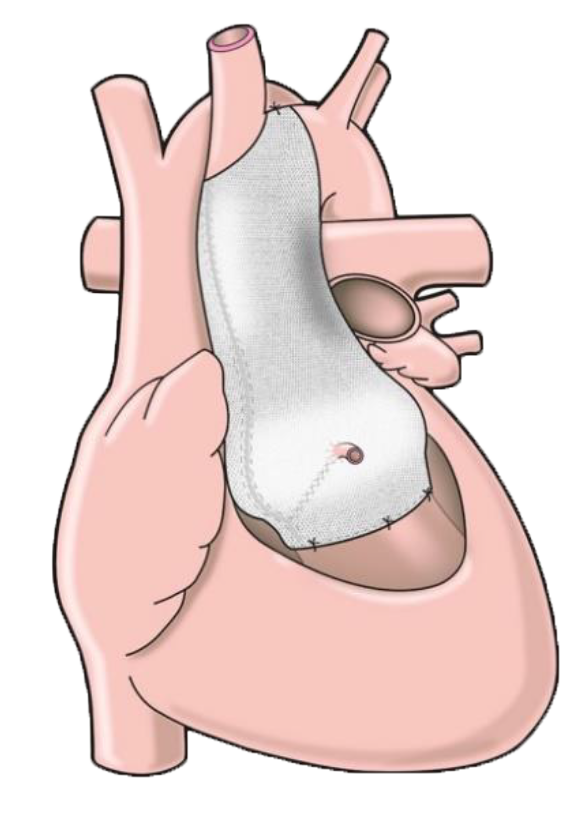One of the common features of Marfan syndrome and related connective tissue disorders (CTD) is dilation of the aorta. People affected by this are at risk of aortic dissection, which can be fatal.
The conventional approach
The current standard surgical means of managing aortic dilation/dissection is to replace the ascending aorta, with or without replacement of the aortic valve.
During total root replacement (TRR) surgery, the ascending aorta and aortic valve are removed and replaced by an artificial graft. To prevent blood clots forming on the replacement valve, the patient has to take anticoagulant drugs for the rest of his or her life.
Alternatively a valve sparing root replacement (VSRR) procedure can be done in which the patient’s aortic valve is retained and remounted within an artificial tubular graft material that replaces the weakened aorta. One advantage of this approach is that anticoagulant therapy is not required; the drawback is that further surgery may be required in the future.
Both approaches are major, open heart surgical procedures that require a cardiopulmonary bypass (CPB) or heart-lung machine.
The ExoVasc® PEARS approach
The ExoVasc® PEARS provides an alternative to aortic root replacement. A personalised, custom-made external support is made to exactly match the patient’s aorta. This is placed around the ascending aorta, which remains intact. Since the vessel and the valve remain intact, there is usually no need for CPB during surgery or for the patient to take anticoagulant drugs following surgery. The ExoVasc® PEARS becomes incorporated into the aortic wall over time.
“I am beyond grateful for the option to have the PEARS procedure done. I truly believe that the PEARS procedure has saved my life and given me quality of life.”
Nicole Boyce, 2023

The benefits
Relatively quick to implant
The surgery to implant the ExoVasc® PEARS takes considerably less time than conventional aortic root replacement, with or without valve sparing. There is usually no requirement for CPB during the PEARS procedure.
Does not require anticoagulants post-surgery
The patient retains their own aortic valve, so there is no need to take anticoagulant drugs and live in fear of excessive bleeding/stroke. It is also a safer option than root replacement for those who wish to become pregnant (see Allen C, Pepper J. External aortic support for people with Marfan's syndrome. BMJ. 2010;340:c1692).
A life-long solution
The ExoVasc® PEARS prevents further dilation and becomes incorporated into the aortic wall. Further surgery to manage the condition is unlikely to be necessary. However, the ExoVasc® PEARS does not preclude further aortic intervention if it is needed in the future (see Makoto Hibino et al. Redo Cardiac Surgery After Personalized External Aortic Root Support Operation. J Am Coll Cardiol Case Rep. 2024 Nov, 29 (22) 102704.
More about the Aortic PEARS procedure
Find out more about the procedure.
Patient stories
More than 1,500 people have had an ExoVasc® PEARS implanted. Some of them have shared their stories and experiences.
Patient benefits brochure
You may find our patient benefits brochure useful when discussing the ExoVasc® PEARS with your doctor.




